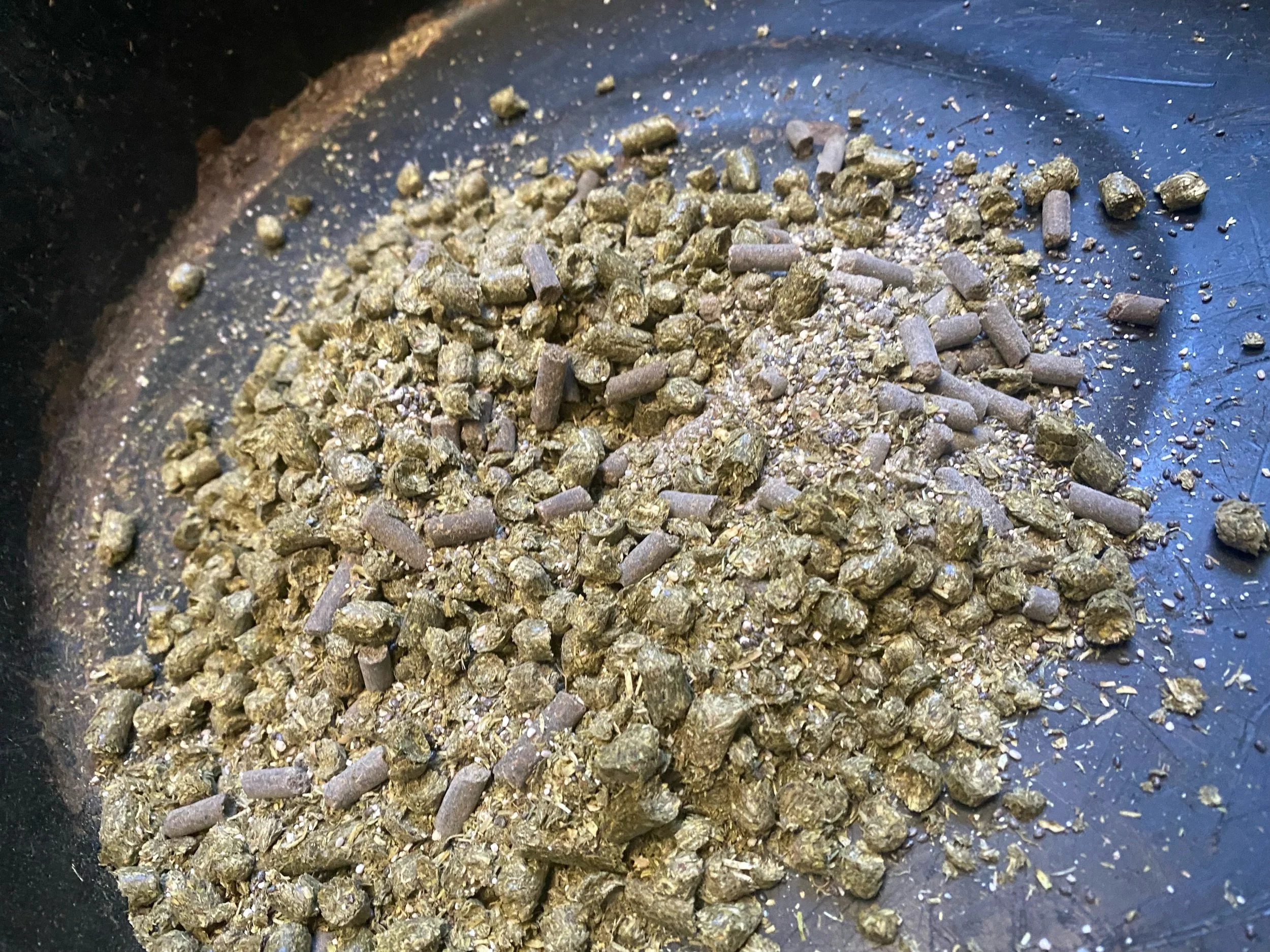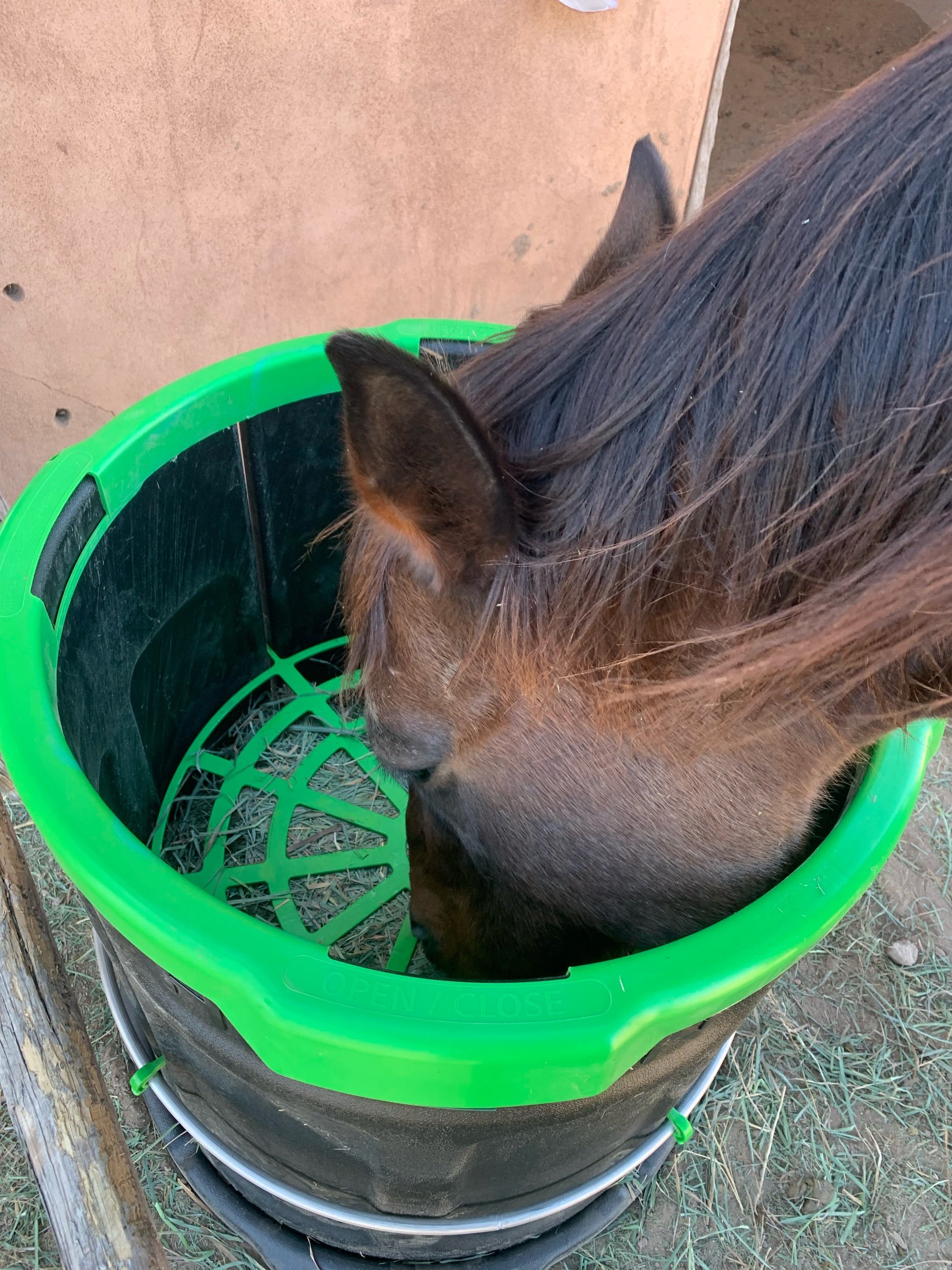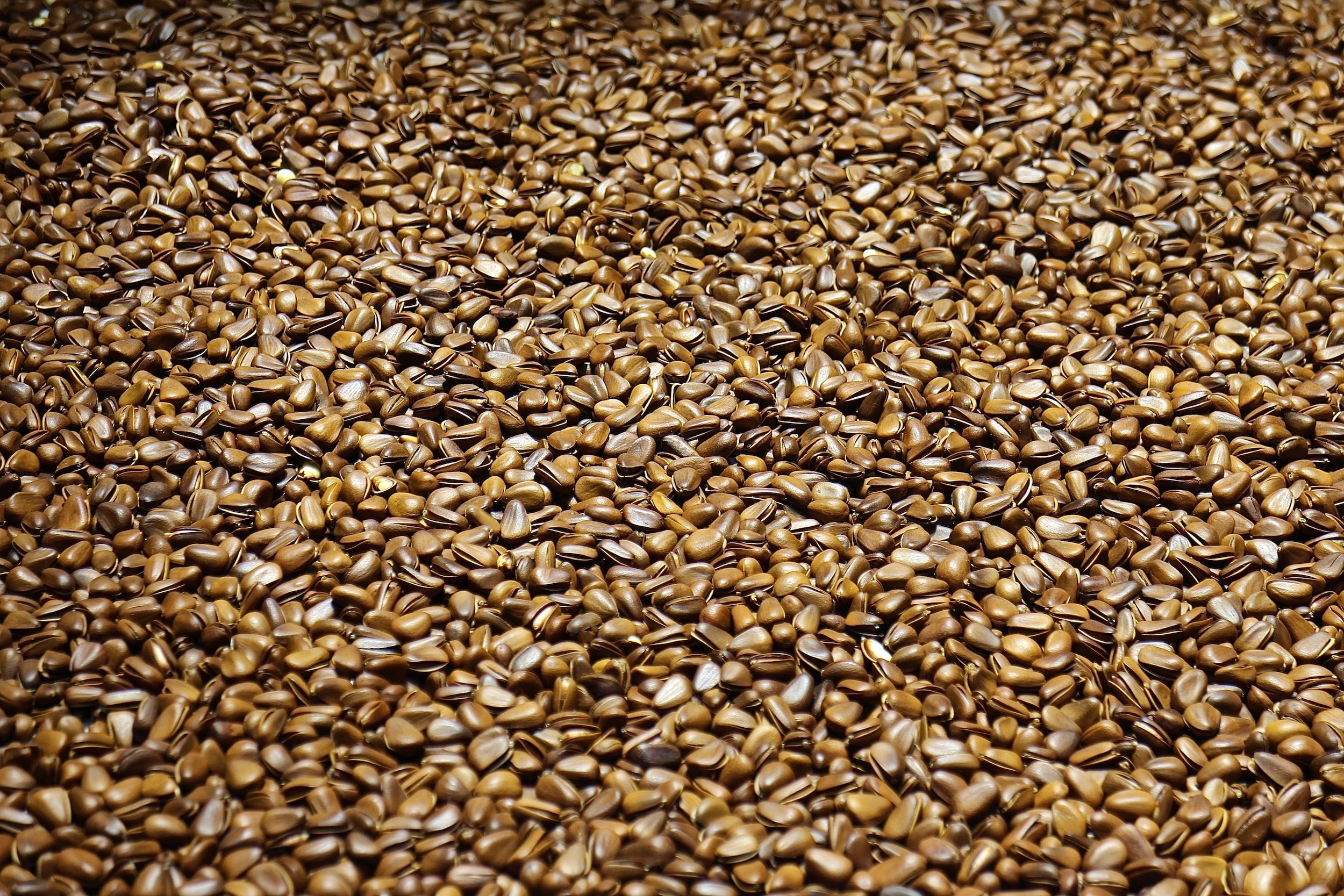Simple Grain Free Diet for Horses
Exact recipe as shown below, with the addition MadBarn Visceral Pellets
One of the best things you can do for your horses is offer slow fed grass hay. Many owners choose to offer near 24/7 access by utilizing slow feeders and hay nets.
Prioritizing quality hay over fresh pasture grass is widely recommended for horses at risk of developing laminitis, founder, metabolic syndrome (EMS), cushings (PPID), PSSM, and other syndromes or diseases. While this is more expensive for many owners the following ‘cheaters forage diet’ is a great option for supplementing with basic nutrients that hay and grass are lacking.
This is a widely recommended recipe that can be adapted for your horses needs fairly easily. Feed this meal twice a day to ensure optimal absorption of nutrients and to meet the daily requirements.
INGREDIENTS:
Desired amount of Sainfoin or Triple Crown Timothy Balance Cubes. Other options are Timothy, Orchard, Teff or Alfalfa Pellets/Cubes or Molasses Free Soaked & Rinsed Beet Pulp (Speedi-Beet).
1 Serving of Vermont Blend, California Trace Plus, AminoTrace+, KIS Trace or similar
1 Tablespoon of Salt (iodized or unrefined sea salt)
1/3 - 1/2 Cup of Ground Stabilized Flax, or Chia Seeds
1 Pump of Emcelle Vitamin E (2000 IU’s) or similar source of Natural Vitamin E
Additional Copper and Zinc, as needed*
Levels of each can be adjusted according to your horses size and weight, lifestyle, exercise regimen, and any other needs.
*If your horse is struggling with persistent hoof issues such as cracks, chips, flares, thrush, thin soles, white line separation, fungus, and even laminitis - it may be worth testing your hay for a nutrient analysis to determine iron & other levels to see if your copper and zinc levels are being met with the forage balancer alone. If not, consider increasing the amount of copper and zinc that your horse is receiving daily.
Please, please, please, SOAK your hay pellets and cubes if you are feeding more than 1 cups worth. Not only do they swell up once wet, but if they haven’t received that moisture prior to entering the digestive tract, they will pull that moisture from the digestive tract. Dehydrating the digestive system like this increases risk of impaction colic and more!
Feeding large quantities of unsoaked hay pellets or cubes also increase risk of choke.
The general recommendation is to use a 2:1 ratio and use double the amount of water to pellets. If you let this sit and soak, you will see that you can add even more water before making a soup! I typically use more like a 3:1 ratio for soaking my pellets, if feeding more than 1 qt at a time.
It might not look very pretty but soaked hay pellets are a great base for a grain free and forage based diet.










